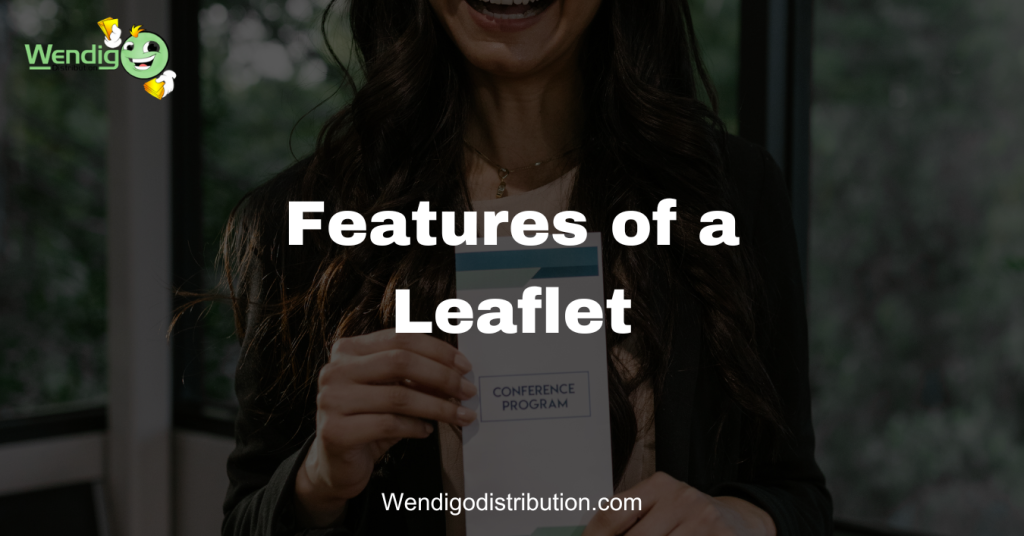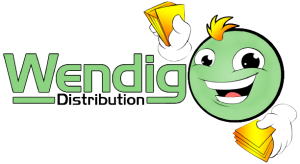Leaflets are an effective way to spread and rank your business and its products or services. Features of a Leaflet offer a convenient, cost-effective and convenient way to reach a wide range of people.
Leaflets come in many different shapes and sizes, but they all share certain features that make them stand out from other forms of marketing collateral. From eye-catching designs to powerful words, there are multiple ways to create engaging leaflets that will catch the reader’s eye.
This article will delve into the features of a leaflet and provide you with tips on how to create the perfect leaflet for your business. We will discuss design elements, formatting options, copywriting techniques and more. With this knowledge, you will be able to create leaflets that stand out from the crowd and bring in more customers for your business.

What are the features of a Leaflet?
Following are the key features of a leaflet:
1-Essentials of a Leaflet
When designing a leaflet, it’s crucial to consider the fundamental elements to ensure your final product looks professional and polished. These features include:
- Size
Leaflets are typically A5 or A6 in size. This makes them easy to handle and ideal for fitting into a handbag or pocket. - Printing
Leaflets are generally printed on both sides, allowing you to include more information than if they were single-sided. - Folding
Most leaflets are folded in the middle, creating three panels – two smaller outer panels and a larger central panel. The most common fold is a half-fold, but quarter-folds and z-folds are also popular. - Headline
A strong headline is essential for any leaflet. It’s the first thing people see, so it needs to be eye-catching and relevant to your message. - Images
Incorporating images can add interest to your leaflet and break up large blocks of text. Ensure the images are high-quality and relevant to your content. - Content
Your leaflet should convey a clear message that’s easy to understand. Use simple language and avoid jargon. - Call-to-Action
Your leaflet should include a call-to-action that guides the reader on what to do next. This could involve visiting your website, phoning your business, or coming into your shop.
When these elements are thoughtfully combined, they create a leaflet that is not only visually appealing but also effectively communicates your message.
2-Designing a Leaflet
When designing your leaflet, consider these tips:
- Incorporate Eye-Catching Visuals: Use appealing images to grab attention.
- Maintain Simplicity: Keep your design clean and uncluttered.
- Highlight Key Benefits: Emphasise the advantages of your product or service.
- Ensure Readability: Use clear fonts and concise language.
- Remain Relevant: Make sure all information is pertinent to your audience.
See more about how to design leaflet
3-Folding – Consider Different Folding Options for Your Leaflet
Here are some of the most popular folding styles for leaflets:
- Half-fold: A single fold in the centre of your leaflet that divides it into two halves
- Tri-fold: Three equal folds that divide your leaflet into three panels
- Z-fold: Folds resembling the letter ‘Z’, dividing the sheet into three separate sections
- Gate fold: Two folds that meet at both edges, creating four panels when folded
- Accordion fold: Several parallel folds that create adjacent panels when folded
You’re not limited to these options, as there are several more folding styles available. Ultimately, the choice you make depends on your style preferences and what you want to achieve with your leaflet.
4-Ensure Conversion add Call to action
The primary aim of leaflets and any advertising medium is to convert potential customers into paying customers. To achieve this, include a strong call-to-action that guides the reader on the next steps, such as visiting your website, phoning your business, or visiting your shop. If unsure which call-to-action will be most effective, experiment with different options to determine which yields the best results.
5-Structuring a Leaflet
To ensure your leaflet is read, structure it for clarity and visual appeal. Use short paragraphs, bullet points, and headings to make it easy to understand. Enhance the design with images and graphics to break up the text. Finally, include a clear call-to-action, such as “Visit our website” or “Visit our Shop,” to prompt the reader to take the next step.
Conclusion
Designing a successful leaflet requires careful consideration of all its features. Whether it’s making sure the content includes important keywords, giving the reader a clear call to action, or selecting the right size and paper type to fit the printing job, the features of a leaflet are integral in achieving its purpose.
Leaflets should be designed to meet the needs of the target audience, and with careful thought and planning, these features can be customized to ensure success. With the help of this guide, you now have the knowledge and skills to design a leaflet that is informative, attractive, and effective.
FAQS
Q: What are the key features of a leaflet?
A: The key features of a leaflet include concise and targeted information, visually appealing design, clear headings and subheadings, eye-catching images, contact information, a call-to-action, and a compact size for easy distribution.
Q: How can I make my leaflet visually appealing?
A: To make your leaflet visually appealing, use a balanced layout with ample white space, choose complementary colours, use high-quality images and graphics, incorporate clear and legible fonts, and create a visual hierarchy through font sizes and styles. Additionally, consider using bullet points, infographics, and attention-grabbing headlines to enhance visual appeal.
Q: What size should a leaflet be?
A: The size of a leaflet can vary, but common sizes include A4 (210 x 297 mm), A5 (148 x 210 mm), and DL (99 x 210 mm). The size depends on the amount of content you want to include and the level of detail you wish to provide. Smaller sizes are often more convenient for distribution.
Q: How many pages should a leaflet have?
A: A leaflet typically consists of a single sheet of paper folded into two, three, or four panels/pages. The number of pages depends on the amount of content and the complexity of the message you want to convey. Keep in mind that a concise and focused leaflet is generally more effective than a lengthy one.
Q: What type of paper should I use for printing a leaflet?
A: The choice of paper depends on factors such as budget, durability, and desired finish. Common options include gloss-coated paper for vibrant colours and a polished look, matte-coated paper for a more sophisticated feel, or uncoated paper for a natural and textured appearance. Consider the purpose and target audience when selecting the paper type.
Q: Can I include images in my leaflet?
A: Yes, including images in your leaflet is highly recommended. Images can capture attention, convey information, and enhance the overall visual appeal. Choose relevant and high-quality images that complement your message. Ensure they are properly sized and optimized for print.
Q: How should I organize the content in my leaflet?
A: Organize the content in your leaflet in a logical and easy-to-follow manner. Use headings, subheadings, and bullet points to break up the text and make it scannable. Present information in a sequence that guides the reader through the key points, ensuring clarity and coherence.


